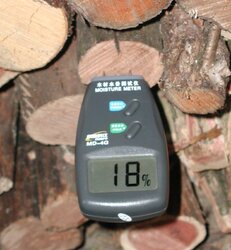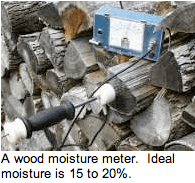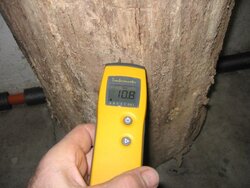I'm into a bit of wetter wood at the bottom of a stack, apparently, and have noticed a big difference in getting gasification going from a cold start. It's a lot harder. Nofossil has made the point several times that once you get gasification going, you can get by with less-than-optimum wood. In my experience, that's true. So I've learned to always start my fires with the driest wood, and then after I've got a good flame going, to put on the wetter stuff.
Like trying to burn wet or green wood in any stove, furnace or boiler, you can do it, but it's takes more work and thought, and the results aren't as good as burning uniformly dry wood. I can imagine the frustration of somebody who buys a gasifier and tries to make it work with wood that's only partly dry (say, wood cut the previous summer). I've decided to buy a moisture meter. For the $25 or $50 that they cost, I think they should be standard equipment with any new gasifier. Otherwise, wood condition is just a guess, and you can't adequately set the air adjustments on your boiler with green wood.
I see moisture meters on sale from $30 to up over $200. I assume the expensive ones are for kiln driers and woodworkers who need to know mc with some accuracy and precision. I'm guessing that one of the cheaper ones would be fine for firewood. Any recommendations?
Like trying to burn wet or green wood in any stove, furnace or boiler, you can do it, but it's takes more work and thought, and the results aren't as good as burning uniformly dry wood. I can imagine the frustration of somebody who buys a gasifier and tries to make it work with wood that's only partly dry (say, wood cut the previous summer). I've decided to buy a moisture meter. For the $25 or $50 that they cost, I think they should be standard equipment with any new gasifier. Otherwise, wood condition is just a guess, and you can't adequately set the air adjustments on your boiler with green wood.
I see moisture meters on sale from $30 to up over $200. I assume the expensive ones are for kiln driers and woodworkers who need to know mc with some accuracy and precision. I'm guessing that one of the cheaper ones would be fine for firewood. Any recommendations?





